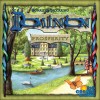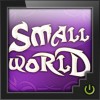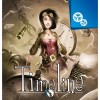
Ramenhotep
gamer level 4
2164 xp
2164 xp
followers
18
18
Use my invite URL to register (this will give me kudos)
https://boardgaming.com/register/?invited_by=ramenhotep
profile badges
...
...
...
...
recent achievements

I Got What I Wanted
Add a game to your Owned list that was previously in your Wish list.
Add a game to your Owned list that was previously in your Wish list.

Intermediate Reviewer
Review 8 games and receive a total of 380 positive review ratings.
Review 8 games and receive a total of 380 positive review ratings.

Critic - Level 3
Earn Critic XP to level up by completing Critic Quests!
Earn Critic XP to level up by completing Critic Quests!

Zealot
Give 50 hearts (loyalty points) to a single game
Give 50 hearts (loyalty points) to a single game
Player Stats
Critic (lvl 3)
780 xp
780 xp
Explorer (lvl 1)
223 xp
223 xp
Professor (lvl 2)
348 xp
348 xp
Reporter (lvl 0)
76 xp
76 xp
About Me
I like tactile games with innovative mechanics. I enjoy philosophizing about gameplay and critiquing design in places as diverse and varied as The Hunger Games and the U.S. economy.


















































ZOMBIEPOX
GAMEPLAY
ZOMBIEPOX is a purely coop containment game, where the players are working together to contain a zombie outbreak.
ZOMBIEPOX’s board is a grid of faces of people in your town. Two of them start as zombies (represented by a zombie chip). Each turn, the current player draws a card. First, this card has something bad that happens, second, the player gets to do something good.
In this world, zombie bites cause the zombie pox (represented by a green chip). When someone infected with the zombie pox dies, they reanimate as a zombie. The first type of bad effect a card can have is “spread.” When a spread card is drawn it indicates a direction, for example up. All zombies then spread zombie pox to healthy people above them (by biting), and all people infect with zombie pox spread it to the healthy people above them (by coughing). The other bad effect a card can have is an “outbreak.” When an outbreak occurs, one new person (of the player’s choice) gets the zombie pox.
After bad effects happen, the players are usually allowed to either vaccinate 3 healthy people against zombie pox (by putting a red chip on them), or cure and vaccinate one person infected with the zombie pox (by replacing their green chip with a red one).
But watch out! If any person becomes surrounded on all sides by infected people, that person turns into a zombie. If a baby (special spaces) becomes infected, she immediately turns into a zombie. If too many people turn into zombies, the players lose. The players win if the zombie pox can’t spread in any direction.
MESSAGE
As with all Tiltfactor games, ZOMBIEPOX has a goal; in this case, ZOMBIEPOX’s goal is to encourage vaccination and to teach systems thinking. And initial studies suggest that it does just that. In fact, it does a better job of teaching systems thinking and encouraging vaccination than POX: Save the People, a mechanically similar game but about a disease and no zombies. Why is this? Tiltfactor theorizes it’s simply because being engaged in the zombie narrative makes players more engaged in the game and learn more.
THOUGHTS
This game is fun, simple, and quick. I’ve seen players 7-65 enjoy the game, and it’s a good filler for 15 minutes or so. While not the best game to play over and over, I’ve played it a ton whenever I have a spare minute, and I still find it a fun challenge to try to play on the hardest difficulty (with no new zombies allowed).
The materials are cool, especially the board which is a soft, flexible, washable and indestructible playmat (like those that Magic players use). This is a particularly good game to have around if you have kids to play it with. Despite this, even hardcore gamers will find the game a challenge to win at easiest difficulty at least for the first few plays.
Ratings for various types of gamers:
Power Gamers – 4
Strategy Gamers – 6
Avid Gamers – 7
Social Gamers – 8
Casual Gamers – 9
Family Gamers – 10